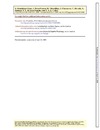Identificador persistente para citar o vincular este elemento:
https://accedacris.ulpgc.es/jspui/handle/10553/6514
| Título: | Strength training combined with plyometric jumps in adults: sex differences in fat-bone axis adaptations | Autores/as: | Guadalupe Grau, Amelia Pérez-Gómez, Jorge Olmedillas, Hugo Chavarren, J. Dorado, C Santana, A. Serrano-Sanchez, J. A. Calbet, José A.L. |
Clasificación UNESCO: | 241106 Fisiología del ejercicio | Palabras clave: | Leptin Training Muscle |
Fecha de publicación: | 2009 | Publicación seriada: | Journal of Applied Physiology | Resumen: | Leptin and osteocalcin play a role in the regulation of the fat-bone axis and may be altered by exercise. To determine whether osteocalcin reduces fat mass in humans fed ad libitum and if there is a sex dimorphism in the serum osteocalcin and leptin responses to strength training, we studied 43 male (age 23.9 2.4 yr, mean +/- SD) and 23 female physical education students (age 23.2 +/- 2.7 yr). Subjects were randomly assigned to two groups: training (TG) and control (CG). TG followed a strength combined with plyometric jumps training program during 9 wk, whereas the CG did not train. Physical fitness, body composition (dual-energy X-ray absorptiometry), and serum concentrations of hormones were determined pre- and posttraining. In the whole group of subjects (pretraining), the serum concentration of osteocalcin was positively correlated (r = 0.29-0.42, P < 0.05) with whole body and regional bone mineral content, lean mass, dynamic strength, and serum-free testosterone concentration (r = 0.32). However, osteocalcin was negatively correlated with leptin concentration (r = -0.37), fat mass (r = -0.31), and the percent body fat (r = -0.44). Both sexes experienced similar relative improvements in performance, lean mass (+4-5%), and whole body (+0.78%) and lumbar spine bone mineral content (+1.2-2%) with training. Serum osteocalcin concentration was increased after training by 45 and 27% in men and women, respectively (P < 0.05). Fat mass was not altered by training. Vastus lateralis type II MHC composition at the start of the training program predicted 25% of the osteocalcin increase after training. Serum leptin concentration was reduced with training in women. In summary, while the relative effects of strength training plus plyometric jumps in performance, muscle hypertrophy, and osteogenesis are similar in men and women, serum leptin concentration is reduced only in women. The osteocalcin response to strength training is, in part, modulated by the muscle phenotype (MHC isoform composition). Despite the increase in osteocalcin, fat mass was not reduced. | URI: | https://accedacris.ulpgc.es/handle/10553/6514 | ISSN: | 8750-7587 | DOI: | 10.1152/japplphysiol.91469.2008 | Fuente: | Journal Of Applied Physiology [ISSN 8750-7587], v. 106 (4), p. 1100-1111 |
| Colección: | Artículos |
Vista completa
Citas SCOPUSTM
57
actualizado el 08-jun-2025
Citas de WEB OF SCIENCETM
Citations
51
actualizado el 08-jun-2025
Visitas
82
actualizado el 03-mar-2024
Descargas
442
actualizado el 03-mar-2024
Google ScholarTM
Verifica
Altmetric
Comparte
Exporta metadatos
Este elemento está sujeto a una licencia Licencia Creative Commons

